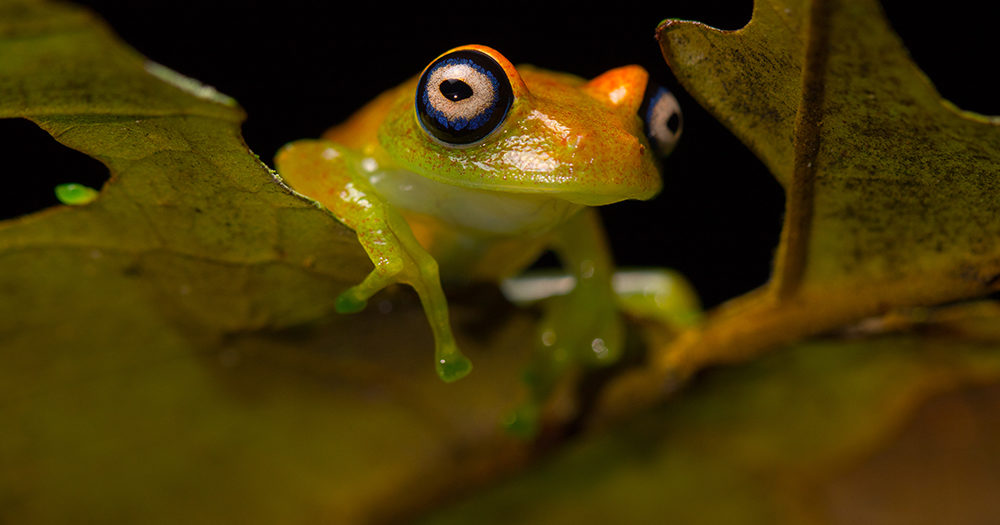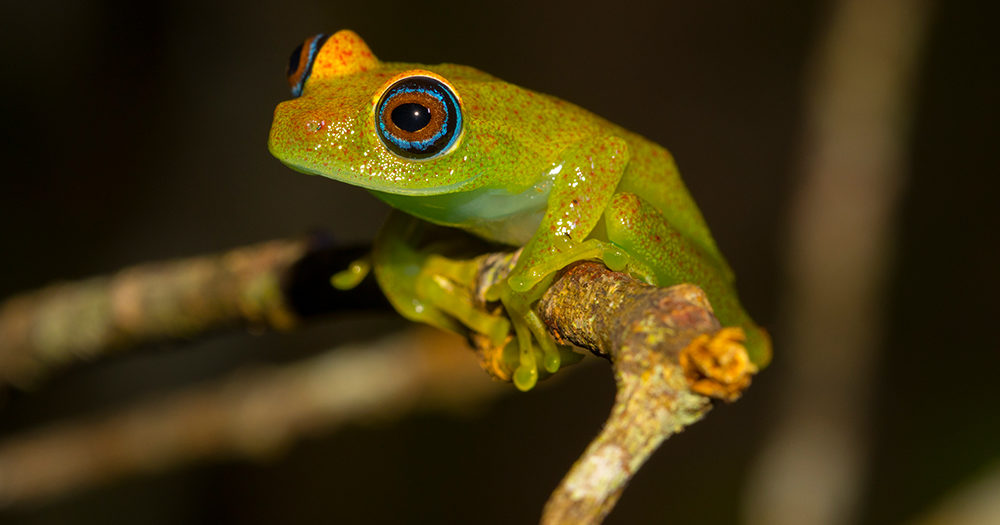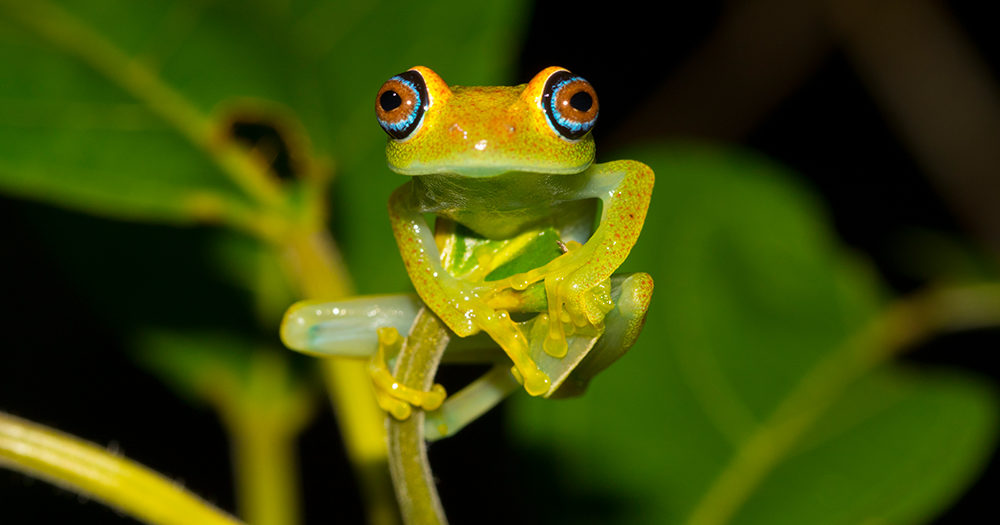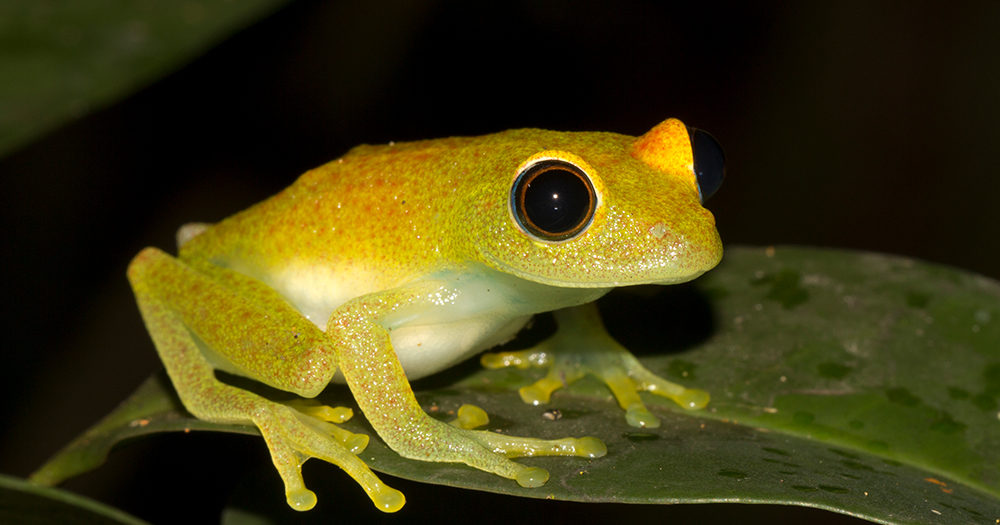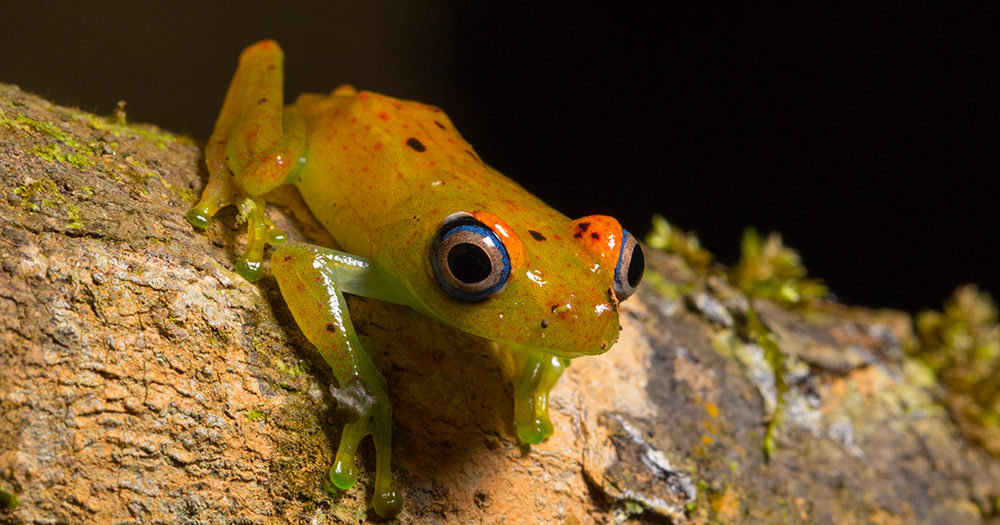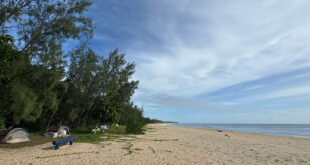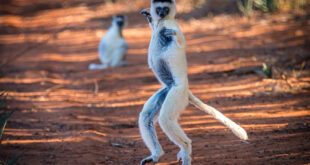Anyone who has ever been on the road in Andasibe-Mantadia will surely have discovered it at night: Boophis viridis, the Green Bright-Eyed Frog. Most specimens have a lot of red dots on their body, which is especially noticeable at night. They only grow to 29 to 35 mm, with the females occupying the upper size places. You can easily distinguish Boophis viridis from other frogs on the island: They have a deep blue iris periphery.
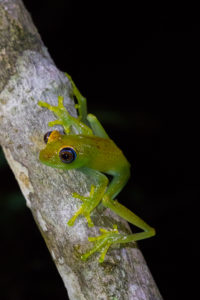
The Green Bright-Eyed Frog lives in the rainforests of the east coast of Madagascar at altitudes between 350 and 1100 m above sea level. Their distribution area reaches from Mananara in the north to Ranomafana and the Andringitra mountains in the south of the island. In their habitat, the yellowish shining Madagascar frogs are bound to slowly flowing waters. Also, larger puddles and ditches filled with water are inhabited. Although the frogs live in the rain-rich forest belt of the east coast of Madagascar, their activity is seasonal. During the rainy season from November to March, it is mating season. The males climb on plants so that they sit about one to two meters above the ground. From there they call loudly for females. If a worshipped female follows the call, the male jumps on her back in the water and fertilizes the female’s eggs. The female can spawn a good 150 eggs. They are small and dark brown. Within a few weeks, the tadpoles develop into land-seekers, lose their tails, and finally look like real Bright-Eyed Frogs.
In contrast to most animals of Madagascar, Boophis viridis is classified as least concern on the IUCN red list. Although the habitat is endangered by slash-and-burn, logging, and zebus grazing, the population is still very large. If you want to find this little frog, you should search at night. Due to its bright skin color, the frog stands out much better in the dark from leaves, ferns, and grass. During the rainy season, it is almost always found in the reserves V.O.I.M.M.A. and Mitsinjo as well as in the National Park Andasibe-Mantadia.
 MADAMAGAZINE Your Magazine about Madagascar
MADAMAGAZINE Your Magazine about Madagascar
